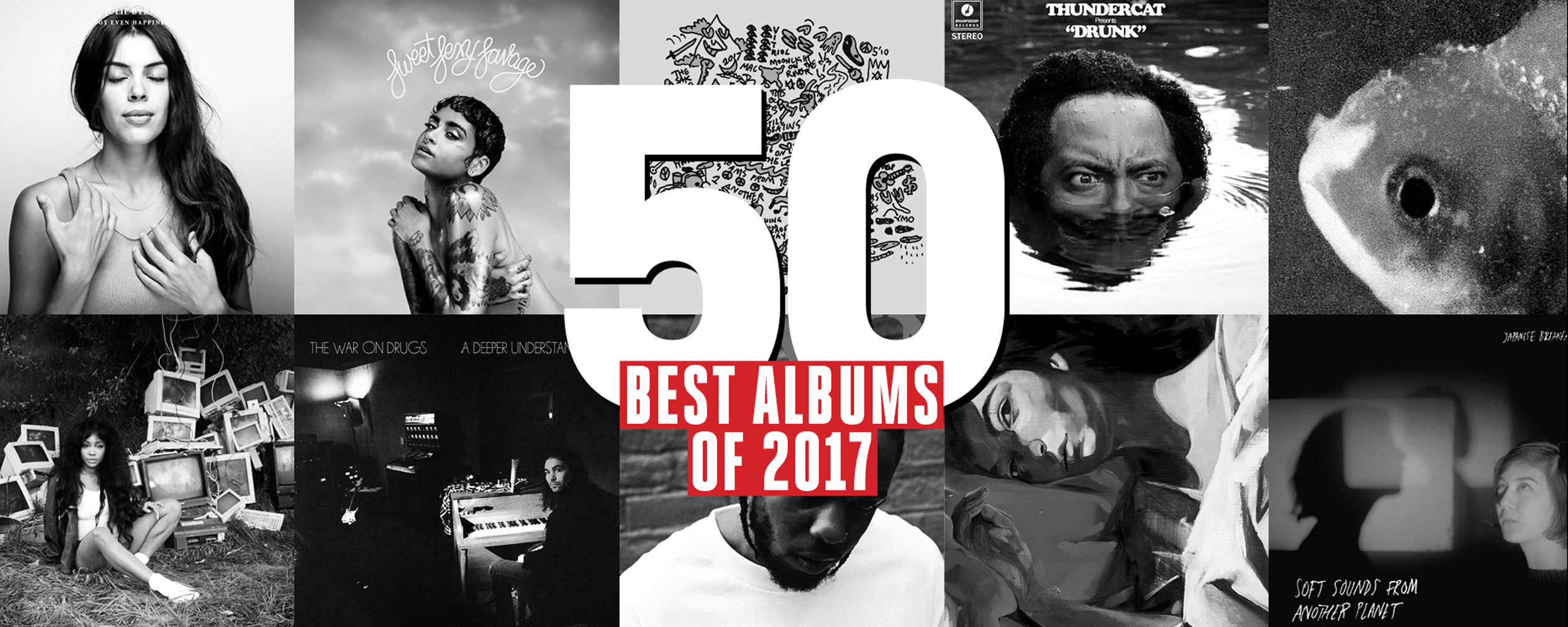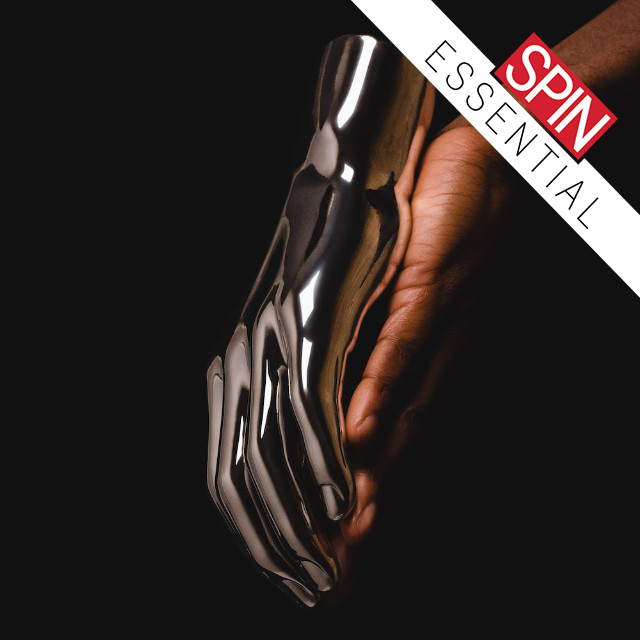AZD, Darren Jordan Cunningham’s fifth album of experimental club music under the Actress moniker, waits for about four minutes before introducing its first beat. That might not sound like a very long time, but it’s immensely satisfying when the hissing techno drums finally kick in halfway through second track “Untitled 7,” the album equivalent of a floor-filling transition in a DJ set. Rather than let the rolling rhythm carry him and his listeners toward oblivion for a while, Cunningham cuts the drums after just one minute, reducing “Untitled 7” back to the bouncy unaccompanied bassline that comprises its entire first half. After another minute, the throbbing kick drum returns to the mix, but just as it makes its re-entry, the song fades out and draws to a close.
Actress has built an entire career on beguiling and occasionally frustrating his listeners in this way. His first records arrived about a decade ago, just as the dubstep phenomenon was exploding into the global underground, and were lumped in with the genre mostly by virtue of timing, location (Cunningham is based in London and hails originally from Wolverhampton), and a shared nocturnal atmosphere. And while it’s true that Actress sometimes draws from the same murky Jamaican bass and 2-step twitch that animated dubstep, he’s just as likely to channel the rhythmic rigor of techno, the swing of Chicago house, the loping swagger of classic East Coast hip-hop, or the washy embrace of ambient music. Ultimately, Actress isn’t defined by allegiance to a particular genre, but Cunningham’s singular evocation of contemporary urban life: sometimes oppressive, others meditative, situated somewhere between the Hazyville of his debut and the Ghettoville of his moribund fourth album, filled with the churn of heavy machinery and thick clouds that look like natural fog one day and automobile exhaust the next.
Cunningham’s reluctance to indulge his listeners’ expectations is another running thread. He followed his relatively dancefloor-oriented and universally acclaimed breakout LP Splazsh with R.I.P., a great album that is nonetheless nearly impossible to dance to, filled as it is with abstractions that frequently lack a rhythm track altogether. And after R.I.P. unexpectedly raised his profile even further, he released Ghettoville, a dense and noisy work whose air of malaise threatened to overtake the music entirely. While Ghettoville has its defenders–including SPIN–others saw it as a low point in the Actress catalog, and when Cunningham made intimations that it would be his last album under the moniker, it was easy to wonder whether he’d run out of dilapidated lots and rusty chrome rooms to explore with his music.

Also Read
50 Best Albums of 2017
AZD quickly and wonderfully makes clear that neither retirement nor creative exhaustion is in the cards quite yet for Actress. Like its predecessors, the album comes with a heady conceptual framework: Cunningham cites the street-level sci-fi of the late NYC artist and occasional rapper Rammellzee as a signpost, as well as the pioneering psychoanalyst Carl Jung’s idea that people carry “shadow” personalities that darkly mirror their conscious minds. And also like its predecessors, AZD does not generally require knowledge of its framework to be appreciated as an excellent body of music. One possible exception to this rule is “CYN,” a gorgeous and fleeting homage to Rammellzee and the city that raised him. With its reverberant synth sounds and uneven rhythms, “CYN” (NYC backwards, get it?) imagines what you might come up with if you heard Rammellzee’s classic early hip-hop single “Beat Bop” in a dream and tried to reconstruct its subterranean funk from half-remembered fragments the next day.
Cunningham used to refer to his work as “R&B concrète,” and though the former half of that epithet no longer really scans, the latter is still a useful concept for understanding his music. While other producers who approach dance music as a space for experimentation might do their tinkering on a beat-by-beat level, Actress treats received ideas about genre as raw materials for narrative-oriented collage. A given moment of Actress music might sound like Cunningham’s lo-fi version of pro forma house or techno when heard in isolation, only to unspool itself later. Tracks that function perfectly well as warehouse bangers on their own also provide ordered contrast to the amorphous oil slicks of sound around them. In this way, Actress resembles the musique concrète composers of 1930s Paris, cutting up tapes filled with familiar sounds and rearranging them to create disorienting new stories.
Cunningham centers the use of this technique on AZD, to great effect. “X22RME,” which served as the lead single, shuffles along to a synth figure that is positively vibrant by Actress’s standards, prompting fans to wonder whether Cunningham was signaling a return to the project’s dancier early days. But something goes awry about halfway through “X22RME,” as if the clock keeping all of the track’s elements in time with each other has malfunctioned, leaving the rhythms struggling to find each other again. When they eventually lock back into sync, it’s no longer the bright synth arpeggio that has the lead, but a huge and ominous string line that has been steadily creeping forward from the depths of the mix. By the end, it’s like something dark and twisted about “X22RME” has effected the track’s own demise from within. It reminds me of Sonic Youth’s 1988 classic “Total Trash,” featuring a seemingly harmless rock guitar riff that grows teeth and slowly grinds itself into an unrecognizable slop.
https://youtube.com/watch?v=Acs8NOJheUQ
Even better is “There’s an Angel in the Shower” the album’s penultimate track, which opens with a placidly stuttering piano loop. Eventually, a 138-BPM pulse rudely interrupts, having no easily identifiable rhythmic relationship to the music that came before. Over the next seven minutes, these elements push and pull against each other, only occasionally cohering, leaving you with the sensation that you’ve been smoking weed and trying to meditate in your apartment while your neighbors throw a killer party upstairs.
ZD’s increased emphasis on narrative allows Cunningham a broader palette than he’s used on any single album in the past, and at times, it feels like he’s mining his own catalog for building blocks. The lovely interlude “Falling Rizlas” and opener “Nimbus” have the twinkling music-box melodies that dominated R.I.P.; tracky and functional numbers like “Fantasynth,” “Blue Window,” and “Runner” harken back to Hazyville and Splazsh; the claustrophobic “Dancing in the Smoke,” with a sampled command to “Dance!” that sounds like it has a threat of violence attached, could have been a leftover from Ghettoville. As a result, AZD sometimes feels like a kind of thesis, inspecting and refining each stage of Actress’s development and resolving the apparent contradictions between them. Cunningham seems to approach each Actress release both as its own statement and as a constituent part of some larger aesthetic whole, and as such, attempting to declare any of them the “best” is probably missing the point. But if you’re looking for the album that most fully encapsulates Darren Cunningham’s vision–with a sound that is more adventurous than Hazyville and Splazsh, dancier than R.I.P., and more approachable than Ghettoville—AZD is it.




